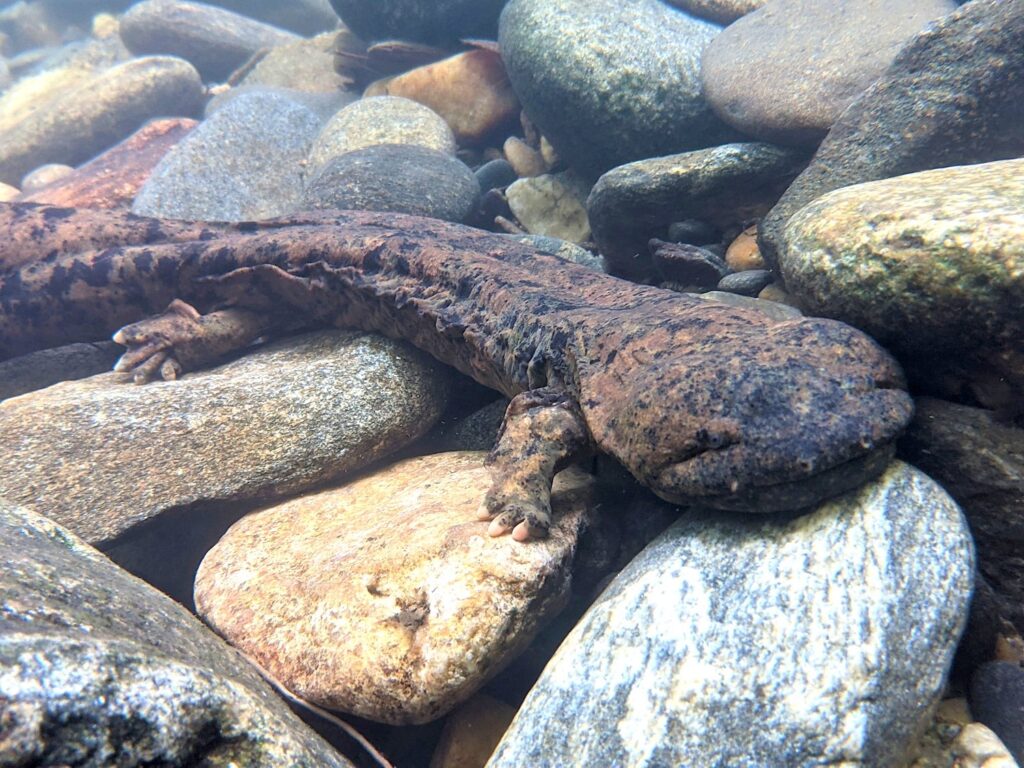Saving the Eastern Hellbender: New Research in Great Smoky Mountains National Park
There’s something magical about wading through the cool, crystal-clear streams of the Great Smoky Mountains. The water rushing over smooth stones, the canopy of trees filtering sunlight into dancing patterns on the surface – it’s a world unto itself. But beneath those rushing waters, an ancient creature is fighting for survival, largely unseen by the human visitors who treasure this park.
The Eastern hellbender, North America’s largest salamander and one of the most fascinating creatures I’ve encountered in my years exploring the Smokies, is in serious trouble. And now, a groundbreaking study funded through the National Park Service’s Natural Resource Condition Assessment Program aims to answer critical questions about this mysterious giant’s future.
The Hellbender Crisis in America’s Most Visited National Park
I’ve spent countless hours exploring the hidden corners of Great Smoky Mountains National Park over the years, but the elusive hellbender has always been a rare treat to spot. Now, these encounters may become even more uncommon as populations decline across their range.
Starting this June, scientists will begin a two-year project in the Smokies to investigate the current status of hellbender populations. This research couldn’t come at a more crucial time for these remarkable amphibians, which can grow up to two feet long and live for decades in clean, fast-flowing mountain streams.
Why Hellbenders Matter to the Smokies
The Eastern hellbender isn’t just another species – it’s a living fossil that has remained largely unchanged for millions of years. These remarkable salamanders serve as natural indicators of water quality in the park’s pristine streams. Their permeable skin makes them extremely sensitive to environmental changes, essentially serving as canaries in the coal mine for the overall health of the park’s aquatic ecosystems.
As someone who has cherished the Smokies for years, I’ve come to understand that each species here plays a vital role in maintaining the delicate balance that makes this the most biodiverse national park in the country. When hellbenders struggle, it signals trouble for the entire ecosystem.
The Challenges Facing Hellbender Populations
These salamanders face numerous threats, including:
- Sedimentation from development and erosion
- Water pollution
- Stream habitat destruction
- Climate change impacts on water temperature and flow
- Fungal diseases affecting amphibians worldwide
The new research project aims to determine exactly which of these factors are most significantly impacting hellbender populations in the park, and how conservation efforts might be targeted to address them.
The Science Behind Saving a Species
What makes this research particularly exciting is the cutting-edge techniques being employed. Scientists will use environmental DNA (eDNA) sampling – a method that can detect genetic material shed by hellbenders into the water – allowing them to survey much larger areas without disturbing the creatures or their habitat.
Additionally, any hellbenders captured during the study will be microchipped to allow for tracking of individual animals over time, providing unprecedented insights into their movements and survival rates.
| Research Method | Purpose | Benefits |
|---|---|---|
| eDNA Sampling | Detect hellbender presence | Non-invasive, covers large areas |
| Microchipping | Track individual animals | Provides data on movement and survival |
| Habitat Assessment | Evaluate stream conditions | Identifies key conservation needs |
What This Means for Visitors
If you’re planning a visit to the Smokies this summer or fall, you might spot research teams carefully working in some of the park’s streams. While hellbender sightings are rare for the average visitor (these creatures are masters at hiding under large rocks), knowing that efforts are underway to protect these ancient salamanders adds another layer of appreciation for the complex web of life that makes the Smokies so special.
I’ve always found that understanding what lives beneath the surface of these mountain streams enhances my connection to this remarkable place. Each rock, each ripple potentially conceals a creature that has inhabited these waters since before humans first set foot in these mountains.
How You Can Help Protect Hellbenders
Even as a visitor to the park, there are ways you can contribute to hellbender conservation:
- Stay on established trails to prevent erosion
- Never move rocks in streams (these may be hellbender homes)
- If you spot a hellbender, observe from a distance and report the sighting to park staff
- Support organizations working on water quality initiatives in the Smokies region
The Eastern hellbender has survived since the age of dinosaurs, but its future now depends largely on our actions. This new research offers hope that we can better understand how to protect these remarkable creatures for generations to come.
As someone who has wandered these mountains in all seasons, I’ve come to see the Smokies not just as a collection of scenic views, but as a living, breathing entity where each species plays a crucial role. The hellbender’s story is ultimately our story too – a reminder that in protecting the most vulnerable creatures, we protect the entire tapestry of life that makes the Great Smoky Mountains such a national treasure.

